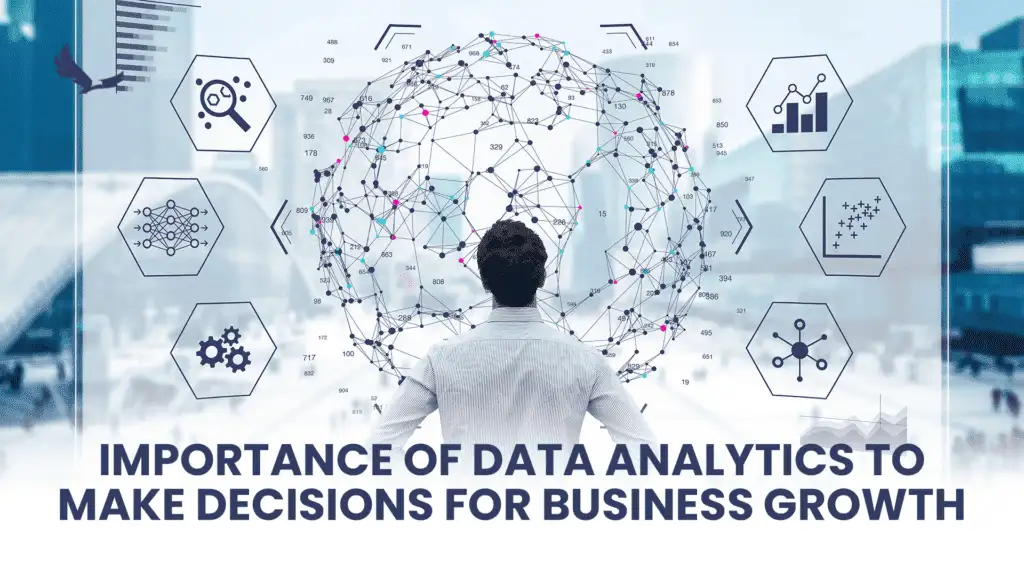Introduction
Building a data-driven culture is not a fleeting trend – but a new standard for businesses. However, you don’t want to get caught in the cobweb of generalization when building a data-driven culture.
Focus on people, strategy, data, process, and technology – these are the five building blocks of a data-driven culture. Traditional enterprises often wonder how to build a data-driven culture that works flawlessly, and that’s usually the first step.
The Need and Importance of Building a Data-Driven Culture: Perspective
More than 80% of CEOs concur that organizations are getting more data-driven. Building a data-driven culture through analytics is more usual than you think. You can look at something like building a data-driven culture through analytics Tableau.
In an extensive webinar, a Forrester Senior Analyst highlights that among 1000 Fortune companies, the entities that increase 10% of their data accessibility lead to an increase of $65 million of net income. Similarly, another report shows that a 10%-20% increase in data accessibility translates into 30% more annual growth for the company.
Remember, data culture and how to build a data-driven organization are often two separate approaches.Before you can enjoy the benefits of a data-driven culture, align components that can help you create a data-driven culture.
Learn to Build a Data-driven Culture in Your Company
It may sound like a cliché, but business leaders have to lead by example to build a future-proof, data-driven culture. Let’s dive into 5 keys to building a data-driven culture:
- Shift in Mindset
Companies should embrace a broadminded approach to embrace data. Companies have to be patient and diligent to build a data-driven culture. A shift in mindset boils down to having a data-centric mindset. This helps companies create momentum.
Take the lead from major companies like Google and Amazon that don’t shy away from testing new ideas and making mistakes. So, continue to learn, test, and repeat to continuously innovate and make informed decisions.
- Offer Data Access
Of course, choosing the “right” metrics matters – but ensuring data is accessible to the “right” staff is also crucial. You can take the approach of how to build a data-driven culture in schools. In fact, schools and colleges have mastered data accessibility. Understand that data accessibility ties together with staff compliance. Focus on the fundamental data to make informed decisions. Determine data controls and KPIs for each project to offer enterprise-level access to data.
- Solidify Your Datasets
It’s all about the quality and significance of the data. This helps you figure out if your employees would embrace it. If you want to make sure your data is trusted, protected, and useful, implement data governance. It’s the best way not just to protect – but also to maintain high-quality data.
Ensure data accessibility meets compliance requirements and doesn’t overshadow or restrict employees’ ability to add value to data. Prioritize your data security and privacy so that you can mitigate risks. Train staff to respect data privacy and take all the measures you can to secure it. If you’re serious about creating a data-centric culture, properly communicate the role to each employee and how they help your company protect digital assets. You can always use data to assess performance. The key, however, is to utilize analytics tools to align your overall strategy.
- Strengthen Your Skillset
You want your employees to have the skills and knowledge to be seamlessly part of the data-centric organizational culture. Hire staff based on their data skills and have a proactive approach to continuously improve the data literacy of your employees.
Data literacy revolves around how efficiently your employees can read and analyze data regularly. On the other hand, data storytelling involves whether or not your staff can spot unique data patterns and communicate insights to others.
You can visualize data to make it easier for your employees to understand complex insights. If you want to make things more straightforward, bring in data coaches or experts who can train your employees to better read and analyze data.
- Get Robust Tools
Companies are often surprised to find out how fast they collect data, and that’s normal in the digital age. Some siloed situations, however, can become serious obstacles. Companies’ goal should be to have solid technology to lay the foundation of a data-centric culture.
For instance, use a common data language to support multiple data systems. Also, opt for a self-service data model so that you can democratize your entire company’s data.
- Leverage Analytics
Speaking of robust tools, make the most out of analytics and automate data reporting and cleansing. Put most of the data burden on machines rather than staff to create more value and boost productivity. You can use analytics solutions to integrate different systems.
Companies can use dashboards to make their productivity meetings more efficient and talk about agendas without wasting more time than they have to. That’s not all – you can use analytics to improve employee satisfaction. However, make sure to properly communicate analytical choices based on external and internal factors, unique situations, and tradeoffs.
Final Thoughts
A future-driven data-centric culture is possible and is an integral part of digital transformation. It is, in fact, how companies now ward off digital regression. Fortunately, most company heads understand that organizational growth and scalability tie together with whether or not they have a data-driven culture.
If your organization is struggling to scale and drive growth, chances are you’re data-detached rather than data-driven. If you’re ready to create a data-centric culture, make sure to make continuous efforts to optimize your operations. Whether it’s a small or large company, data presence and data reliance are crucial to make calculated and logical business decisions.




